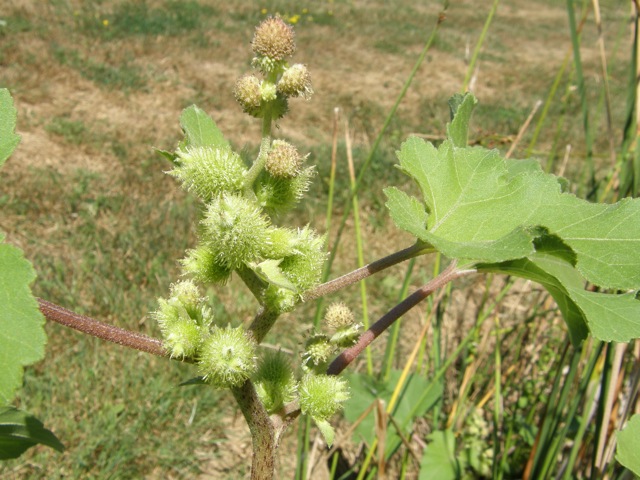Asteraceae, the daisy, sunflower, or composite family.
Description:
Plant:
Rough, upright, often purple-spotted, and sometimes slightly zig-zagging
or sinuous stems with large, long-stemmed leaves,
greenish flowers, and prickly burs. 1'-5' high.
Annual.
Flowers:
Separate male and female flower heads. The female flowers, ovoid and
prickly, grow in the leaf axils and develop rapidly into burs.
The male flowers are slightly smaller, rounder, and more hairy-looking,
and grow in short spikes, often close to the female flowers.
Leaves:
Alternate, somewhat maple-like in shape with three to 5 toothed lobes,
2"-6" long on stems as long as, or longer than the leaves.
Fruit:
A prickly bur with stiff, hooked bristles.
Blooming:
August-October.
Habitat:
Fresh-water beaches, fields, waste areas.
Comments:
Hard to mistake for any other plant. Burdock has somewhat similar burs, but
they grow in terminal spikes rather than in the axils, the leaves do not have
the lobed-maple-like appearance, and the overall aspect of the plant is
quite different. Cocklebur does not have the pink-ended flower heads
that burdock does.
Where to find it:
Mostly on beaches or near the water around the pond.
